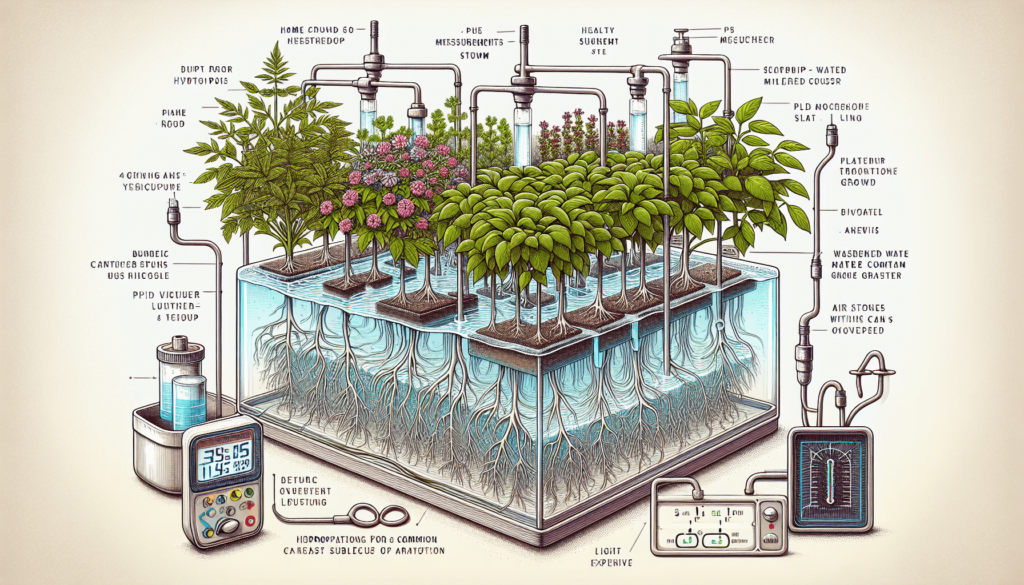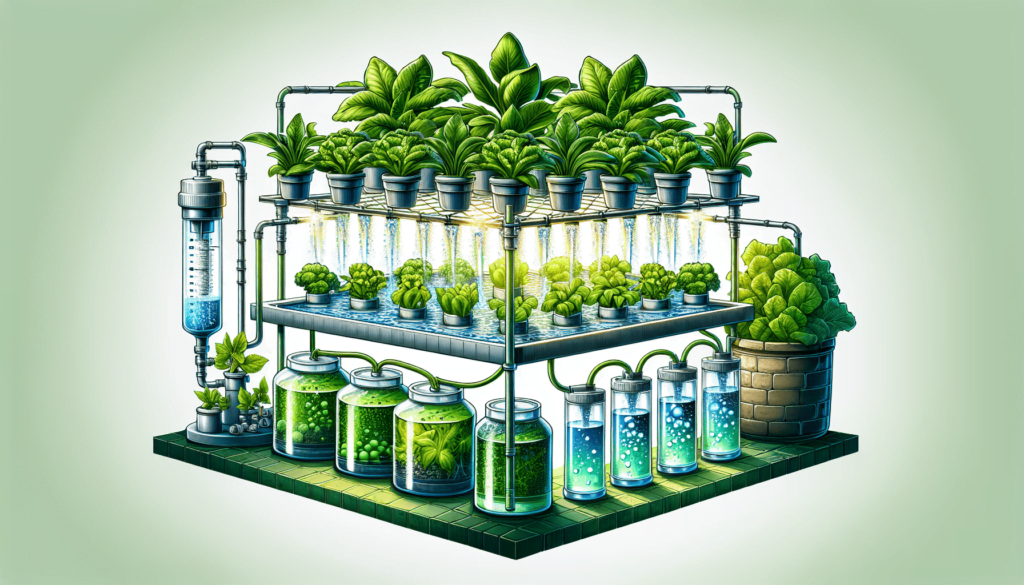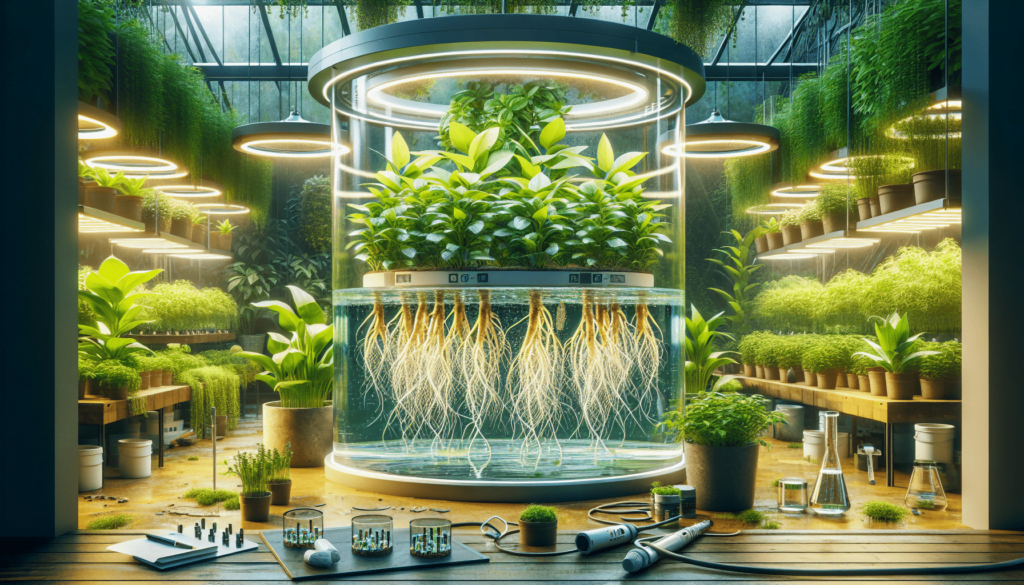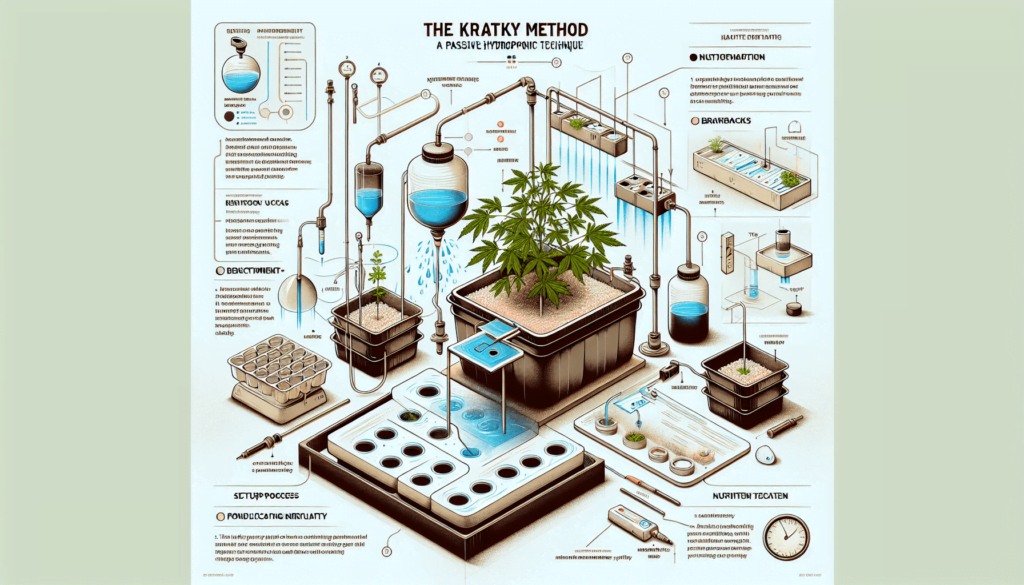As fellow at-home gardening enthusiasts, it’s thrilling to guide you on an exhilarating new endeavor within the world of hydroponics – Deep Water Culture Systems. Imagine, cultivating your favorite plants, greens, and herbs right at home, and the fun part? They’ll swim! Yes, you read that right. This ingenious system literally allows your beloved plants to swim their way to health in a water-based environment. Let’s embark together on this exciting journey, shedding light on the nuts and bolts of setting up your very own Deep Water Culture System, why it’s a boon for your home gardening exploits, and how to make it truly thrive.
Understanding Deep Water Culture (DWC)
What is Deep Water Culture?
Ever wondered how plants can magically grow without soil? It’s not quite magic, but Deep Water Culture (DWC), a form of hydroponics, isn’t too far off. In simple terms, DWC is a method of gardening where we suspend plants in a nutrient-filled water basin with bubbles continuously oxygenating the roots. Plants float happily in their enriched bath, drinking in the nutrients they need to thrive.
Origins and Development of DWC
Just like every good superhero has an origin story, so does DWC. Historians point back to the ancient Hanging Gardens of Babylon as potential candidates for early use of hydroponic principles. Over time, these principles advanced and eventually resulted in DWC. Today, DWC is becoming popular amongst home gardeners. But why the sudden appeal? We’ll dive into the pros and cons next.
Pros and Cons of DWC for Home Gardeners
We always wanna keep it real with you; DWC isn’t sunshine and rainbows all the time. On the plus side, it allows for faster growth and higher yields, plus you can garden in small spaces without soil. It’s like renting a compact city apartment instead of a sprawling suburban house. However, DWC also has its challenges, like the need for constant monitoring of water and nutrient levels. Plus, power outages can be disastrous. Now that’s a potential plot twist we all want to avoid!
Getting Started with DWC: Equipment and Set-Up
Equipment Necessary for DWC
Ready to dive into DWC (literally)? Take a quick shopping trip! You’ll need an air pump (like those used in aquariums), air stones for creating oxygen bubbles, tubing, a pH testing kit, nutrients, a bucket or other container, and of course, your plants. Keep in mind, these are the basics. We’re just getting started.
The DWC Setup Process
Starting DWC isn’t as complicated as constructing an IKEA shelf. First, you make sure the chosen container is deep enough for the roots to grow adequately. Install the air pump and air stones, fill the container with nutrient-rich water, place the plants in a floating platform, and voila! You have a thriving DWC garden in the making.
Choosing the Right Site for DWC Setup
Location, location, location! It affects real estate prices and, believe it or not, your DWC set-up too. You need to consider light exposure, temperature, accessibility for maintenance, and safety from pets or human traffic. If you can find a spot that checks all these boxes, you’ve found a cozy home for your DWC system.

Plants Suitable for DWC
Plant Varieties Ideal for DWC
Before you get carried away daydreaming about pineapples and coconut trees bobbing in your DWC system, let’s bring you back to earth. DWC thrives with leafy greens like lettuce, spinach, and herbs. Even strawberries and tomatoes can join the party.
Selection Tips for DWC Plants
When picking the perfect plant, it’s not just about what looks pretty. Remember, your plants will be lounging in water all day so they have to love it. Besides, plants that seek heavy feeding and quick growth are ideal for DWC.
Dealing with Non-Aquatic Plant Varieties
Look, we get it. Sometimes you want a plant that doesn’t particularly love water. However, we have ways to convince them. Adjusting the nutrient solution, providing adequate aeration, and ensuring proper root support can help. However, choose wisely and when possible, stick with the aquatic-loving variety.
Mastering Planting and Propagation in DWC
Seed Selection Guide for DWC
Choosing seeds that are suitable for DWC relies on selecting plants that thrive in water-rich environments. Look for fast-growing, heavy-feeders such as lettuce or kale. And remember, it’s not just about picking a seed, but about selecting a future plant that will thrive in your DWC system.
Steps for Planting in DWC
Ready to get your hands dirty? Oh wait, there’s no soil, is there? In DWC, you start seeds in a separate container. Once the seedlings develop roots, they’re transferred to the DWC system. This initiation into water culture is like a plant graduation day.
Propagating Plants in DWC
Who doesn’t love more for less? With DWC, you can easily take successful plants and convert them into multiple new ones. Can it get any better? Yes, if you follow the right steps like taking good cuttings while ensuring appropriate water levels and nutrient supply.

Maintenance of a DWC System
Water Level and Temperature Management
Caring for a DWC system is like caring for a fish tank. Maintaining the right water level is critical – it shouldn’t be too high or too low. Also, keep the temperature chill – too warm invites unwanted critters, and too cold slows plant growth.
Nutrient Solution Management
Nutrient management in DWC is a little like making a cocktail. You ought to balance the ratios right. Keep a careful eye on the pH levels to ensure your plants can absorb nutrients effectively.
Importance of Cleaning and Disinfecting Your DWC
We all love cleanliness, and your DWC system is no different. Regular cleaning, disinfecting, and changing of the water helps in preventing the establishment of diseases and pests. It’s like maintaining good hygiene habits, but for your garden.
Recognizing and Troubleshooting Common DWC Issues
Common Challenges in DWC and Their Causes
Now, let’s gear up to face some common DWC challenges. Algae growth? Nutrient deficiency? pH woes? We’ve got you covered! The trick is to tackle these issues head-on. Don’t let them turn into plant-sized problems.
Solving Nutrient Deficiencies
Seeing pale or yellowish leaves? Perhaps stunted, slow growth? Sounds like a nutrient deficiency to us. Luckily, most of these deficiencies can be fixed. You can adjust the nutrient mix, change the pH, or simply ensure better aeration.
Dealing with Pest and Disease Problems
Pests and diseases are uninvited guests in any garden, including DWC systems. But fear not! Early detection and preventive measures go a long way towards ensuring healthy, productive plants.
Understanding Hydroponics and DWC: What’s the Difference?
Key Features of Hydroponics and DWC
Confused between hydroponics and DWC? Hydroponics is like the umbrella term, and DWC is a technique under it. Both focus on soil-less gardening, but DWC specifically involves a deep water reservoir with continuous aeration.
Benefits and Drawbacks of Hydroponics versus DWC
Just like comparing apples and oranges, each technique has its benefits and drawbacks. While both offer soil-less farming and efficient nutrient control, DWC allows for consistent aeration, promoting faster growth. Conversely, DWC systems are prone to temperature issues and require constant attention.
Choosing the Best Technique for Your Garden
In the end, it’s all about what fits best in your garden, taking into consideration your available resources and the crops you wish to grow. After all, gardening is about growing and nurturing what brings you joy, isn’t it?
Exploring Advanced DWC Techniques
Nutrient Film Technique
Ready for the big leagues? The Nutrient Film Technique is an upgrade. Your plants sit on a slightly sloped tray, with a thin film of nutrient-rich water flowing over their roots.
Aeroponics Technique
Or maybe you’re excited by high-tech gardening? Aeroponics sees your plants suspended in air, with nutrient-rich water misted onto their hanging roots. It’s high maintenance, but the rewards can be astounding.
Flood and Drain Technique
Ever heard about flood and drain in DWC? It’s a technique where you periodically flood the root area with nutrient solution and then fully drain it back into the reservoir. Consider it as a means to confuse your plants and yet delight them!
Success Stories and Case Studies of DWC Home Gardeners
Inspiring DWC Success Stories
Thinking whether DWC is worth the effort? We’ve witnessed many home gardeners transforming their patios into lush, leafy greens factories using DWC. Stories from our community surely serve as an inspiration and motivation to get started.
Learning from DWC Case Studies
Every success story provides valuable insights and lessons for us to learn from. In the world of DWC, be it learning about the best plants to grow or how to handle challenges, let’s explore together.
Value of Community Interaction Among DWC Gardeners
See, we’re in this together. DWC gardening is not a solitary pursuit. The experiences, successes, and even failures shared by others help us learn and grow. If one person figures out a hack to a common challenge, we all win!
Sowing the Seeds for Success: Call to Action
How to Apply What You’ve Learned
Don’t let this be one more article you read and forget about! It’s time to apply what you’ve learned and start planning your DWC system. As Confucius once said, “The man who moves a mountain begins by carrying away small stones.”
Next Steps in Your DWC Journey
As you embark on your DWC journey, remember to keep experimenting and learning. Get your hands wet, literally!
Invitation to Join Our DWC Gardening Community
We’re always here for you on this exciting journey. Join our community of home gardeners using Deep Water Culture Systems. Together, we grow!


